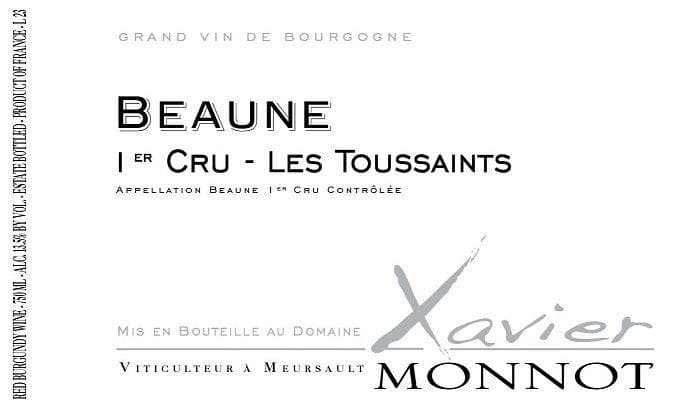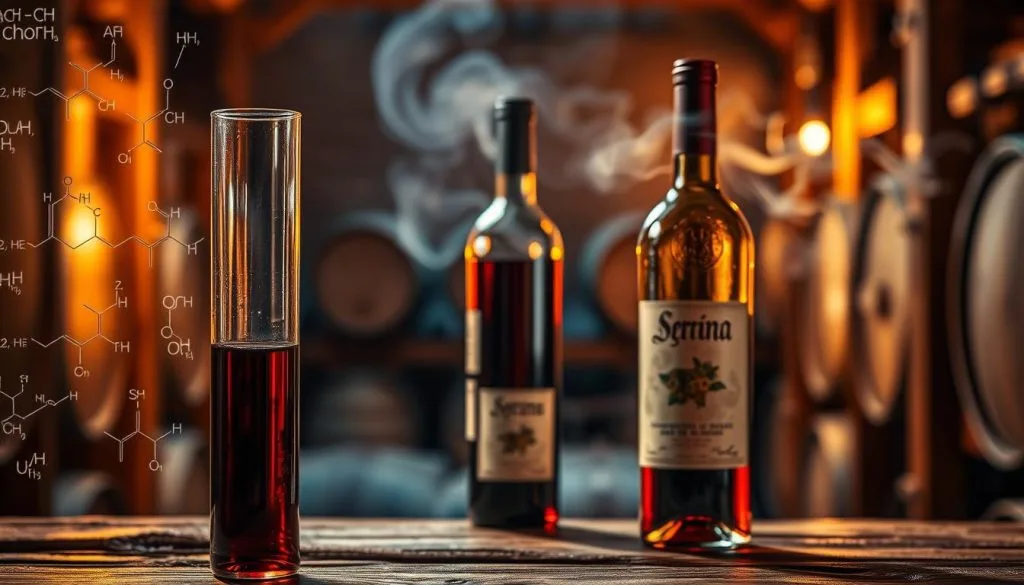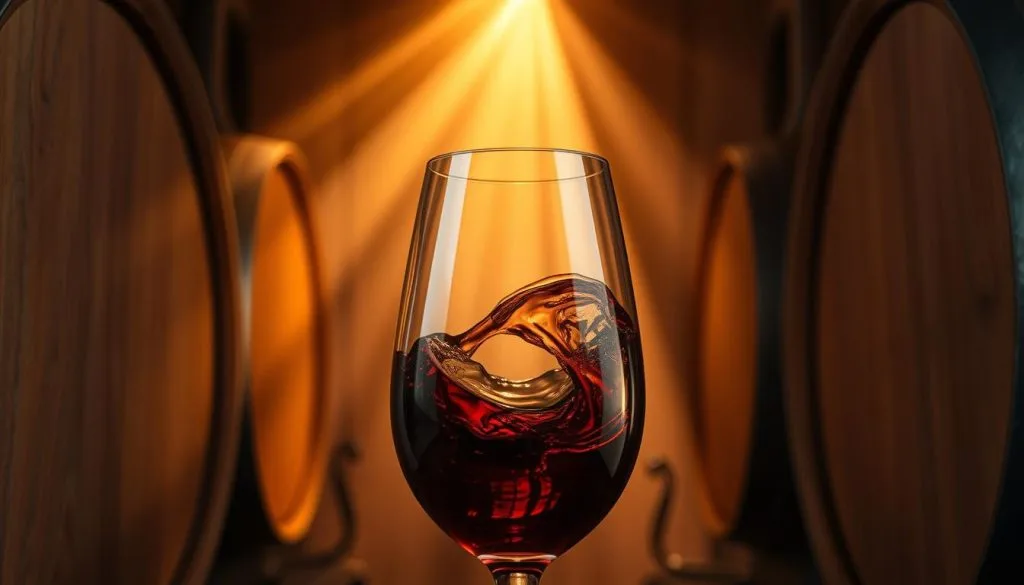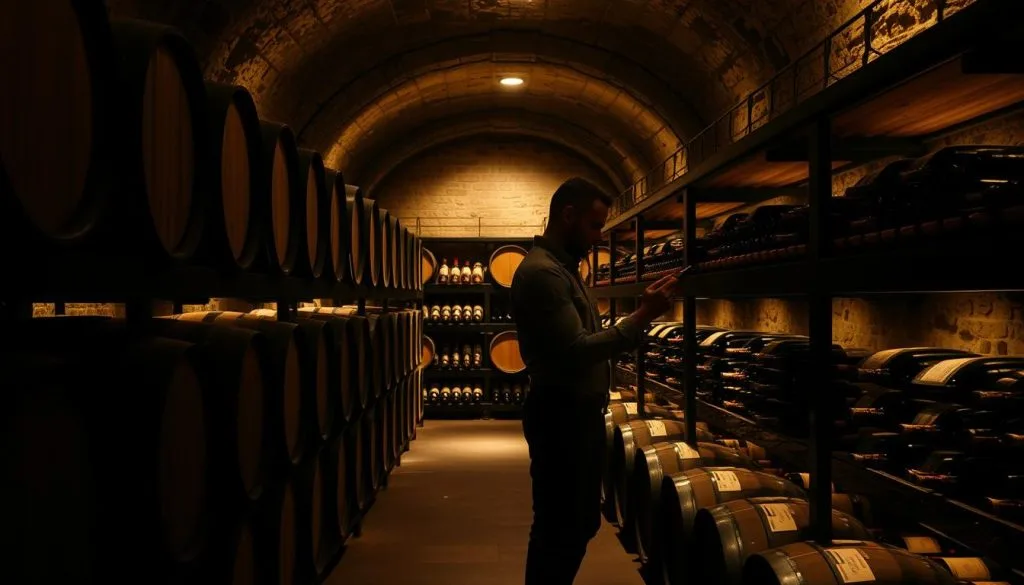This post may contains affiliate links. Read our full disclosure here.
Ever wondered why that dusty bottle in your cellar tastes like liquid velvet? Aging isn’t just for cheese or your favorite leather jacket—it’s a high-stakes alchemy where chemistry meets craftsmanship. Think of each bottle as a time capsule, quietly rewriting its story through oxygen whispers and molecular makeovers.
At its core, this transformation hinges on chemical reactions—like tannins doing the cha-cha as they polymerize, smoothing out harsh edges. Acids and esters tango in the dark, creating flavors ranging from caramelized figs to burnt orange zest. But here’s the kicker: even Picasso couldn’t paint this masterpiece without the right studio. A steady 55°F and 70% humidity? Non-negotiable. Too much heat turns your Cabernet into prune juice; too little moisture lets corks crumble like TikTok trends.

Blue Valley Vineyards nails this balancing act, using tech-forward cellars that’d make NASA jealous. Their reds shift from purple reign to brick-red sophistication, while whites glow like liquid amber. It’s not magic—it’s pH levels and patience.
Ready to uncork the secrets? We’re diving deep into why your grandma’s vintage tastes better than your last breakup playlist—and how to make your bottles age like Zendaya at the Met Gala.
Exploring the Fundamentals of Wine Aging
What if your Merlot could out-age your Instagram feed? This isn’t passive storage—it’s a molecular rager where compounds breakdance toward complexity. Every bottle undergoes a sensory glow-up, trading grape’s raw edge for velvet sophistication.
Chemical Transformations Over Time
Fresh from fermentation, young vino packs punchy fruit notes—think smashed blackberries or green apple zing. But tannins start slow-dancing, linking arms (polymerizing, technically) to soften bitterness. Acids mellow like reality stars post-scandal, while esters throw curveballs: that first whiff of leather or toasted hazelnut? That’s chemistry flipping the script.
Controlled oxidation acts like a Michelin-starred chef—a dash here unlocks caramelized pear in Chardonnay; too much turns Cabernet into vinegar. Oak barrels? They’re the hype house, injecting vanilla swagger via lactones. “It’s a dance between chemistry and craft,” admits Napa’s Vineyard 29 winemaker. “Miss a step, and your 20-year potential becomes a $50 paperweight.”
From Vine to Glass: The Journey of Winemaking
The magic starts long before bottling. Grape skins donate color and grip during maceration—reds get their tattoo-worthy structure here. Fermentation isn’t just yeast partying; it’s flavor architecture. Cold-soaked Pinot Noir? That’s intentional extraction for silky texture.
Post-barrel, oxygen becomes the ultimate editor. Microdosed through cork pores, it deletes harshness, highlights nuance. Riesling’s petrol notes or Syrah’s bacon fat whispers? Those are time’s autographs. But here’s the plot twist: every vintage writes its own memoir. Climate shifts, harvest timing, even lunar cycles—they’re all ghostwriters in this liquid biography.
The Science Behind Wine Aging: How Time Transforms Flavor
Imagine your cellar as a VIP lounge where molecules mingle like A-listers at Fashion Week. Chemical reactions aren’t just background noise—they’re the bouncers curating which flavors get past velvet ropes. Tannins swap their leather jackets for silk robes, acids ditch their sharp-tongued sass, and sugars caramelize like celebrity chefs flambéing dessert.

Understanding Wine Chemistry
Young vino arrives with the subtlety of a TikTok dance trend—all fruit bombs and acid drops. But tannins start forming alliances, polymerizing into smoother chains that ditch bitterness for cashmere vibes. Acidity? It’s the zen master finding balance, while esters pull plot twists worthy of a Netflix thriller—one day grass clippings, next week toasted hazelnut.
Oak barrels aren’t just storage—they’re flavor incubators. Oxygen seeping through wood pores acts like a hypebeast collab, merging vanilla lactones with grape DNA. A 2023 UC Davis study found phenolic compounds in aged Cabernets evolve 40% faster at 55°F versus room temp. “It’s molecular speed dating,” explains sommelier Lydia Fox. “Heat rushes connections; cold makes them ghost.”
Red wines become liquid charisma under these conditions. What starts as jammy intensity in youth morphs into suave whispers of tobacco and truffle—like watching a indie band go stadium-status. Whites? They trade citrus zing for honeyed depth, proving aging isn’t just for Bordeaux heavyweights.
Influential Components: Tannins, Acidity, and Aromatic Complexity
Think of tannins as the bouncers of your bottle—they dictate which flavors stay sharp and which mellow into velvet. These phenolic compounds start as mouth-puckering enforcers but evolve into silk-spinning alchemists through polymerization. Like a Marvel hero ditching their origin story, they link arms to soften astringency while boosting mouthfeel.

Polymerization: Tannins’ Glow-Up
Young reds pack tannic punch—think espresso grit or black tea bite. Over years, these molecules form chains, smoothing edges like 2000s pop-punk bands going acoustic. Temperature swings act as DJs here: cooler cellars slow the process, while subtle warmth accelerates texture changes. A study on matured reds shows polymerization can increase perceived sweetness by 22% in decade-old bottles.
Aroma’s Metamorphosis
Freshly bottled wines scream primary notes—bursting cherries in Pinot Noir, lime zest in Riesling. But oxygen’s microdosing through cork pores flips the script. Secondary aromas emerge: think leather jackets in Cabernet or toasted almond in Chardonnay. Tertiary whispers arrive last—tobacco, forest floor, that elusive “liquid library” vibe.
| Component | Young Wine | Aged Wine |
|---|---|---|
| Tannins | Grippy, assertive | Silky, integrated |
| Acidity | Zingy citrus | Caramelized apple |
| Aromas | Primary fruit | Tobacco, truffle |
Oak barrels aren’t just storage—they’re flavor incubators. Vanilla and spice notes from new French oak meld with grape tannins, creating layered textural narratives. Whites like Burgundian Chardonnay prove aging isn’t just for reds, trading bright acidity for honeyed complexity worthy of a skincare influencer’s glow-up reel.
Practical Considerations: Storage Conditions and the Role of Barrels
Picture your wine cellar as a backstage greenroom—every bottle’s prepping for its flavor debut. Nail the environment, and tannins strut their silk-robed best; botch it, and acidity flops like a reality TV villain. Three factors rule here: climate control, oxygen choreography, and casting the right grape stars.

Optimal Temperature and Humidity Guidelines
Think 55°F (13°C) with 70% humidity—the sweet spot where wines age like Pharrell Williams. Fluctuations above 5°F risk “bottle shock,” turning nuanced reds into raisin soup. Humidity keeps corks supple, while darkness preserves delicate compounds better than SPF 50.
Cork and Bottleneck: Managing Oxygen Exposure
Natural corks act like bouncers with velvet ropes—letting just enough oxygen mingle to soften edges. Technical stoppers (think Diam or Nomacorc) offer tighter control, especially for whites prone to oxidation drama. Horizontal storage? Non-negotiable. It keeps corks hydrated, avoiding premature flavor leaks.
Selecting Age-Worthy Wines
Not all grapes have marathon potential. Seek structured reds like Coonawarra Cabernet Sauvignon—its iron-rich terra rossa soil breeds tannic endurance. Barossa Shiraz’s bold alcohol and acidity? Built for decades. Whites like Hunter Valley Semillon transform from citrus sprinters to honeyed marathoners under proper care.
Pro tip: Treat storage like a skincare routine. Consistency beats intensity. One heatwave can oxidize phenolic compounds faster than a TikTok trend dies. As Napa winemaker Elena Rodriguez quips, “Aged wine isn’t made—it’s curated, one stable hour at a time.”
Conclusion
Like a vintage leather jacket, well-aged bottles tell stories through their evolving texture and character. Chemical reactions—tannins forming alliances, acids mellowing into caramelized whispers—rewrite a wine’s DNA over years. Oxygen’s slow dance through cork pores polishes rough edges, while stable cellars (think 55°F, 70% humidity) act as time machines preserving flavor potential.
Cabernet Sauvignon epitomizes this alchemy. Its iron-clad structure softens into suave tobacco notes, proving reds aren’t the only stars—whites like Riesling morph citrus zing into honeyed depth. Storage isn’t just climate control; it’s curating a liquid legacy.
True enthusiasts treat each bottle like a hit song remix: primary fruit beats fade, making room for tertiary basslines of leather and truffle. Mouthfeel shifts from punchy to velvety, while aromas layer like a prestige TV plot.
Ready to taste time’s magic? Grab a decade-old bottle. Let its evolving profile—part science, part artistry—prove why wine aging remains culture’s most delicious slow burn.




